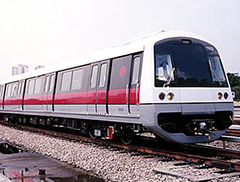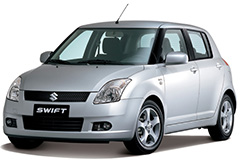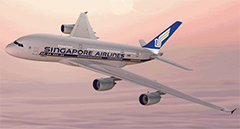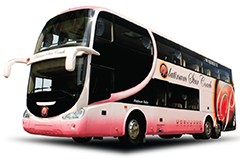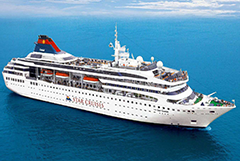Singapore is a place where Chinese, Indian, Malay and western cultures converge and fuse to reflect the immigrant history of the land.
Singapore remained as British Malaya under Sultanate of Johor for more than a century. British colonised the island when they set-up their port here in 1819. The port flourished significantly and attracted migrants. In 1962, it became part of Malaysian Federation and gained independence in 1965.
Singapore currently has a population of 5.3 million people of diverse ethnicity. Asians of different origins, Caucasians, Eurasians, Chinese, Indians, Malays and various other races and ethnicity can be found in country. About 38% of population is constituted of foreigners (PRs and non-residents), making it 6th Worldwide. It is the 3rd most densely populated city in the World trailing Macau and Monaco.
Language
Many Singaporeans are bilingual with English being the common language for most of them. English, Tamil, Malay and Mandarin are the major languages commonly spoken in the island country.
English is taught as the first language in every school. Vernacular or mother-tongue language is taught as the 2nd language. Singaporean Standard English uses British grammar and spelling while Singlish (Singapore Colloquial English) is in local dialect unique to Singapore. Singlish has close affinity with Malaysian English called Manglish.
Bahasu Melayu is the National Language of Singapore and is used in military commands, National Motto, and National Anthem. However, only 15% of Singaporeans speak Malay. Mandarin is commonly spoken among Chinese while some Chinese also speaks various dialects. Tamil is spoken by most of the South Indians and Sri Lankans.
Ethnic Areas
Kampong Glam, Chinatown and Little India are some of the distinct ethnic neighbourhood in Singapore. South Indian food served traditionally on banana leaves as thalis is known and patronised by all. Similarly, Chinese culture can be experienced distinctly in Chinatown. Mass Rapid Transit of Singapore connects most of these ethnic neighbourhoods.
Festivals
The racial diversity in Singapore is exhibited by public holidays and festivals observed in the country too. Buddhist Vesak Day, Chinese New Year, Muslims’ Eid-ul-Fitr (locally known as Hari Raya Puasa in Malay) and Diwali of Hindus (locally known as Deepavali in Tamil) are major festivals in Singapore. New Year, Good Friday and Christmas have become public holidays due to growing Christian population in the country. 9th August is the Singapore Independence Day, which is celebrated with National Day Parade.
Religions
The diversity in ethnicity and races is bound to introduce different religions on the land. Notably, even people from Arabia immigrated to Singapore post its declaration as a port city. Chinese constitute 74% of population and over 30% of them is Buddhist. Other Chinese follows Christianity, Confucianism and Taosim.
Malays are the 2nd largest majority comprising 18% of the population and majority of them are Muslims. Hindus are largely from India and constitute 5% of the population. Indian population in Singapore has considerable numbers of Sikhs and Muslims too. Large numbers of mosques, temples and churches that are found in Singapore are the result of such religious diversity. Jewish synagogues and Sikh gurudwaras are also there. Some of these buildings are of great historic significance and most of them are prominent landmark architectures in the cosmopolis.
Cultural Policy
Tight restriction is maintained on cultural and arts performances in Singapore by the national government. Most artistic works are vetted by Singaporean government and subjects that breach the cultural policy are disallowed to be exhibited. Religion, race, nudity or obscenity in any form, allegations of nepotism or corruption in government, etc. are some sensitive topics that are considered beyond Out of Bounds (OB) markers in Singapore.
School of the Arts is the first pre-tertiary school for arts in the country. It opened in 2008 for students between 13 years and 18 years of age. Liberalisation and development of creative economy are much discussed and talked about in Singapore. Civil society activists, academics, public intellectuals and artistes are mixed in their opinion on the subject.
Cuisine
Diversity is apparent in Singaporean cuisines too. Halah version of Tamil food is served by Malay hawkers at various hawker centres. Similarly, dishes cooked with Malay ingredients and techniques are available at Chinese stalls. Oysters, squids, clams and crabs are popular seafood. Barbequed stingrays served on banana leaves with chilli are among the favourites of locals.
Compare hotel prices and find amazing discounts

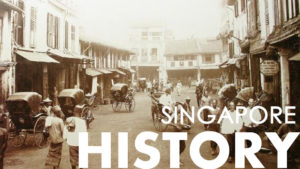 It is believed that mariners discovered Singapore in the 3rd century and by 7th century the place had established itself as a primary trading outpost acting as the supply and entry point for Indian, Chinese, Javanese, Thai, Arab and Malay traders.
It is believed that mariners discovered Singapore in the 3rd century and by 7th century the place had established itself as a primary trading outpost acting as the supply and entry point for Indian, Chinese, Javanese, Thai, Arab and Malay traders.